Giant Gippsland Earthworm






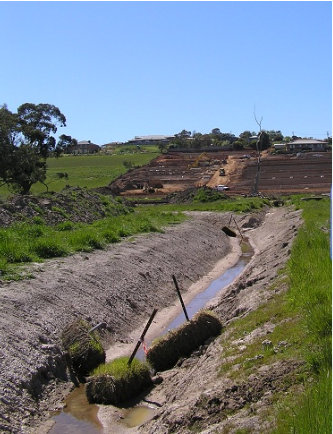
Preparation for crop planting
Eucalypt plantations
Dense revegetation of GGE habitat
Changing land use
Dam building
Drainage and development
Click any image to enlarge
Drainage and development
Click to enlarge
Click to enlarge
Click to enlarge
Click to enlarge
Website by VP-IT
All photographs © Dr. Beverley Van Praagh, Invert-Eco unless otherwise stated. No image may be saved, copied, reproduced or distributed without prior permission from the copyright owner.
Email: info@giantearthworm.org.au
What Threats Do Giant Gippsland Earthworms (GGEs) Face?
Giant Gippsland Earthworms (GGEs) have a limited and patchy distribution throughout their
range. The same characteristics that make giant worms somewhat unique in the earthworm
world also make them more vulnerable to changes in their environment. A low reproductive
rate, limited ability to move from one place to another and a fragile body means that the GGE
cannot recover easily from changes to their environment or move to a better place if, for
example, the soil dries out, floods or a toxin is added. Their large size also means they are
more likely to be injured from digging activities whether that arises from a shovel or an
excavator. Contrary to popular belief, these worms do not become two individuals when
chopped in half and even slight injury may result in death.
In the early settlement of Gippsland, farmers were paid by the government to clear the land
allowing for agricultural production. There are many old stories in the literature that describe
the fields after ploughing as “being red with blood” and that worms “hung from the tynes of the
plough like spaghetti.” However, GGE have existed with agricultural practices and survived
major changes to their habitat since European settlement of South Gippsland in the 1870s. It
appears likely that GGEs can co-exist in the landscape with agriculture as long as certain activities are managed in ways that protect GGE habitat.
Some of the known threats to GGE colonies include:
•
Changes to soil moisture regimes both above ground and below ground (drying or flooding)
•
Physical disturbances to their soil habitat (excavation, cultivation, compaction)
•
Adding toxic substances to the soil – fungicides, some herbicides. The effects of fertilisers are unknown, although highly acidifying fertilisers such as
ammonium sulfate are known to reduce worm numbers.
These threats may arise from activities associated with changes in land-use e.g. pasture to crops or plantations, farmland to housing or industrial estates and
inappropriate revegetation of GGE habitat. Other general farming activities such as ripping and spraying for establishing pastures, dam building and clearing
drains may also impact on GGE habitat.
It seems cows and worms can make good neighbours. Many farmers are aware of ways to protect the GGE habitat.
Click to enlarge
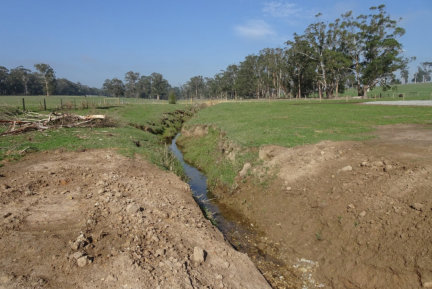
Channelisation and pugging


Giant Gippsland Earthworm
Giant Gippsland Earthworm (GGE)
• About GGEs • Take The ‘Do I Have Worms On My Property?’ Test • The Secret Sex Lives Of Worms • What Threats Do GGEs Face?

Giant Gippsland Earthworms (GGEs) have a limited and
patchy distribution throughout their range. The same
characteristics that make giant worms somewhat unique in
the earthworm world also make them more vulnerable to
changes in their environment. A low reproductive rate,
limited ability to move from one place to another and a
fragile body means that the GGE cannot recover easily from
changes to their environment or move to a better place if,
for example, the soil dries out, floods or a toxin is added.
Their large size also means they are more likely to be
injured from digging activities whether that arises from a
shovel or an excavator. Contrary to popular belief, these
worms do not become two individuals when chopped in
half and even slight injury may result in death.
In the early settlement of Gippsland, farmers were paid by
the government to clear the land allowing for agricultural
production. There are many old stories in the literature that
describe the fields after ploughing as “being red with blood”
and that worms “hung from the tynes of the plough like
spaghetti.” However, GGE have existed with agricultural
practices and survived major changes to their habitat since
European settlement of South Gippsland in the 1870s. It
appears likely that GGEs can co-exist in the landscape with
agriculture as long as certain activities are managed in ways
that protect GGE habitat.
Some of the known threats to GGE colonies include:
•
Changes to soil moisture regimes both above ground
and below ground (drying or flooding)
•
Physical disturbances to their soil habitat (excavation,
cultivation, compaction)
•
Adding toxic substances to the soil – fungicides, some
herbicides. The effects of fertilisers are unknown,
although highly acidifying fertilisers such as ammonium
sulfate are known to reduce worm numbers.
These threats may arise from activities associated with
changes in land-use e.g. pasture to crops or plantations,
farmland to housing or industrial estates and inappropriate
revegetation of GGE habitat. Other general farming
activities such as ripping and spraying for establishing
pastures, dam building and clearing drains may also impact
on GGE habitat.
It seems cows and worms can make good neighbours.
Many farmers are aware of ways to protect the GGE habitat.
Click to enlarge

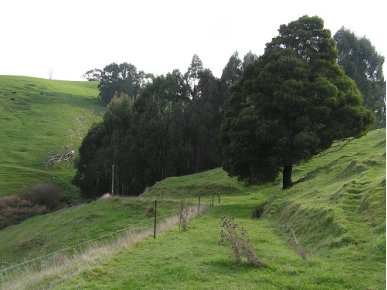

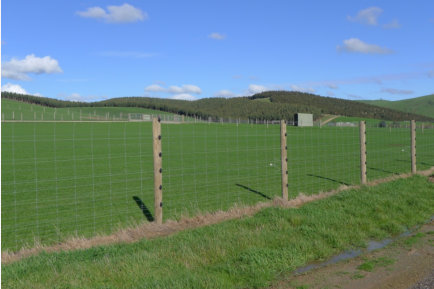


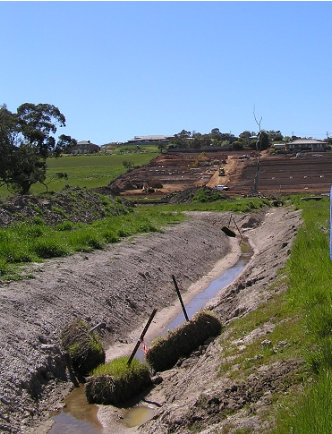
Preparation for crop planting
Eucalypt plantations
Dense revegetation of GGE habitat
Changing land use
Dam building
Drainage and development
Click any image to enlarge
Drainage and development
Click to enlarge
Click to enlarge
What Threats Do Giant Gippsland
Earthworms (GGEs) Face?
All photographs © Dr. Beverley Van Praagh, Invert-Eco unless otherwise stated.
No image may be saved, copied, reproduced or distributed without prior
permission from the copyright owner.
Email: info@giantearthworm.org.au
Website by VP-IT

Channelisation and pugging


















